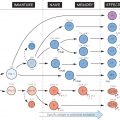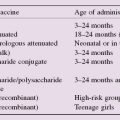In the previous chapter cytokines were introduced as a collection of distinct molecules and receptors, but with a bewildering spectrum of regulatory effects on immunity and immune responses. Numerous cells can make one or several cytokines, depending on the circumstances. Very few cytokines are confined to a single function (pleiotropy) and very few functions rely on a single cytokine (redundancy). There are obvious advantages in this arrangement, for example the chance loss of a single cytokine or cytokine receptor gene would be unlikely to cause serious trouble – although there are exceptions to this (see Fig. 33). The analogy has even been made with language: one can communicate reasonably well with alphabets progessively lacking individual letters, but there would come a point where all messages would read the same. Many cytokines have related structures, and are thought to have evolved via repeated gene duplication (see Chapters 46 and 47). Presumably the present number of cytokines and functions is what nature, through evolution, has found to be adequate without too much in the way of unwanted effects. Interestingly, some cytokines (e.g. interferons) are highly species-specific, others much less so.
The figure shows the combinations of cytokines responsible for the main pathways of immune cell development, differentiation, interaction and function, together with some of the side effects that can result from over-activity. As knowledge has accumulated, cautious attempts have been made to use cytokines in the clinic, although not many have yet become standard therapeutical agents. In fact, the most dramatic effects have come from blocking excessive cytokine activity, and both natural inhibitors and soluble receptors are being extensively tried out. At present, the amelioration of some cases of rheumatoid arthritis by anti-TNF antibodies is probably the best-known example; some others are mentioned on the opposite page.
Bone Marrow
(see also Figs 4 and 15). Unlike most other tissues of the body, the number of each type of immune cell varies greatly, depending on the amount of immune activity (hence the white blood cell count is often used as an indicator of disease; see Fig. 44). In addition, the turnover of cells in the immune system is very high (about 1010
Stay updated, free articles. Join our Telegram channel

Full access? Get Clinical Tree





